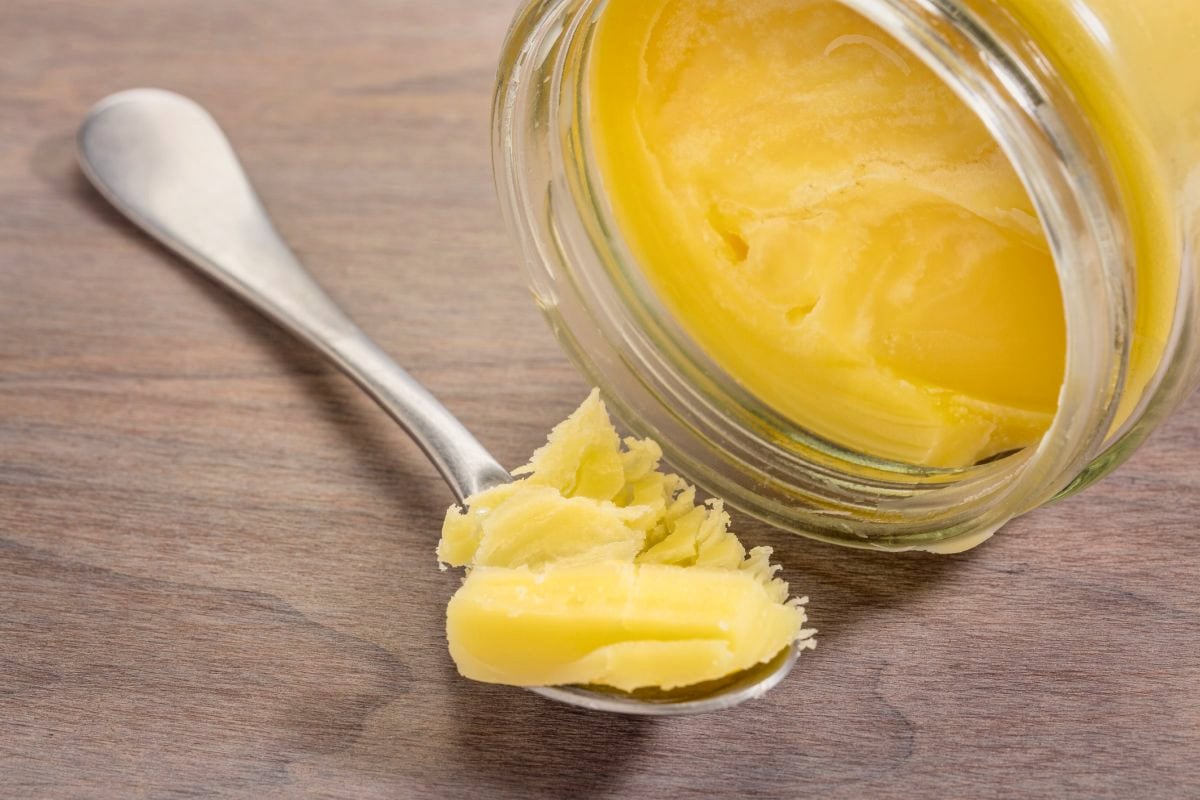Ghee is a clarified butter that has less lactose and casein than regular butter. Originating in Indian cuisine, ghee has been appreciated for its nutty flavor and darker color for centuries. This rich, golden butter alternative is a staple in many recipes and boasts numerous health benefits while enhancing flavor.

What is Ghee?
Ghee is a type of butter in which the milk fat solids have been separated from the butterfat . The remaining ingredients in ghee are short and simple: butterfat mixed with a little bit of water, making it a purer or more clarified type of butter.
Ghee has a higher smoke point than butter, so it won’t burn as quickly or as easily. It also has a unique nutty flavor, which is made from slightly burning the milkfat content prior to removing it during the ghee-making process.
Is Ghee Healthy?
Ghee doesn’t contain milkfats and is a rich source of vitamins, antioxidants, and healthy fats, making it a better alternative to butter for those who have a lactose intolerance. That being said, both butter and ghee are high in natural and saturated fats and should only be used sparingly.
Ghee Health Benefits
- Anti-inflammatory effects
- Fights obesity
- Supports heart health
- Strengthens skin
- Improves digestive health
Potential Health Risks of Ghee with Overconsumption
Since ghee is a saturated fat, eating too much can cause health problems. Consuming too much ghee can raise the risk of getting heart disease and increase weight gain.
How to Make Ghee
- To make ghee, start by simmering milk in a pan on low heat. Once the water dissolves, the butter will begin to foam up, forming solid clumps of white milk.
- Next, continue cooking until the proteins turn golden brown and move to the bottom of the pan.
- Finally, pour the butter through a cheesecloth-lined strainer into a bowl or jar.
How to Store Ghee
Ghee needs to be stored in an airtight container, though it can be kept at room temperature, as long as it is kept away from heat and light. Ghee will stay fresh for about three months when kept in a cupboard or panty.
Ghee can also be kept in the fridge, which extends its life up to one year. Just know the ghee stored in the fridge needs to be left on the counter for five minutes to allow it to soften prior to cooking.
What Recipes to Use Ghee In
1. Rice
Rice is delicious when toasted with ghee for two minutes prior to cooking. Ghee can also be stirred into already-cooked rice.
2. Vegetables
Vegetables can be cooked in ghee instead of regular butter or oil. The result is an extra flavor added to sauteed vegetables like green beans or spinach.
3. Meat
Searing meat in a pan with a small bit of ghee yields delicious results. Simply add the ghee, let it melt a bit, then add in the steak, bacon, or chicken.
4. In Baking
Ghee can replace butter in baking recipes, but because it has a higher fat content, you’ll need to use 20% less ghee than you would butter to balance out the recipe.
5. Eggs
Ghee is delicious when added to poached or fried eggs during the cooking process.
6. Pasta
Ghee can be added to a variety of pasta sauces instead of butter or used as a lubricant to keep the pasta from sticking to itself after cooking.


Leave a Reply